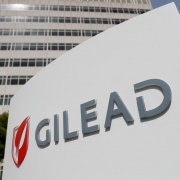Zolgensma’s successful market uptake by payers may hold lessons for other manufacturers of costly gene therapies.
Scientists, researchers, health officials, regulatory agencies, governments, businesses, universities, and many others across the globe are searching for ways to defeat the coronavirus pandemic.
Brands and agencies are finding creative ways to explore the patient experience by placing viewers inside a hypothetical patient’s personal space.
The COVID-19 virus has fundamentally changed how we go about our daily lives on both a personal and professional level. We are becoming more accustomed to social distancing and virtual interaction with our friends, family members, loved ones, and colleagues. The change in behavior seems to be an easier adjustment in our personal lives than professional lives, but both have been impacted as a result of the virus.
The immediate response to the global COVID-19 pandemic was to quarantine the sick, create physical distance among the healthy, and triage thousands. But the road to limiting the disease also has led to business, personal, and economic devastation for millions.
For all the digital and interactive tools that keep popping up, television remains the DTC marketer’s old reliable.
While the healthcare industry looks for ways to combat COVID-19, the beat goes on for drug manufacturers to continue developing and seeking marketing approval for medicines to treat many diseases and conditions. Here is a look at some of the most notable U.S. new drug approvals from Jan. 1 through April 17, 2020.
Point of Care (POC) technology platforms present a number of opportunities to engage with patients, and those opportunities must be tailored to the audience to provide value.
The coronavirus pandemic has gripped the world, leaving everyone scrambling to adjust. The main practice adopted to get through this new normal, social distancing, has impressed upon us all the need for an unprecedented shift in the way we live our lives. As companies and their workforces get accustomed to working during this public health crisis, there can be bumps, hiccups, and concerns about just how we’ll continue doing the important work we do.
When patients with a rare disease fail to receive a proper diagnosis, treatment plan, and therapy, they can suffer for years. Failed treatments for these prolonged conditions strain patients, caregivers, and the health ecosystem. In addition to the significant physical and emotional struggles these patients endure, delayed diagnoses for rare diseases can also result in many years of lost revenue for manufacturers.










